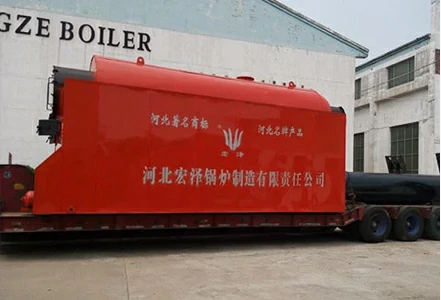
Feb . 11, 2025 04:50 Back to list
oil fired hot water boiler
Optimizing your hot water boiler’s psi (pounds per square inch) is crucial for maintaining its efficiency and longevity. As someone well-versed in the nuances of boilers, I can attest to the importance of understanding the psi settings for optimal boiler performance.
4. Systematic Approach to PSI Maintenance Implementing a systematic maintenance approach is essential. This includes regular inspections, water quality checks, and pressure system evaluations. Professionals often advise an annual comprehensive inspection, which should encompass not just psi level assessments but also efficiency checks and potential system upgrades. 5. Trust through Transparency Manufacturers often supply detailed manuals, charting the standard operational pressure ranges. Familiarizing oneself with these resources fosters a deeper understanding of your specific boiler model, aiding in troubleshooting and routine maintenance. Trust is built when users can cross-reference their experiences with these guidelines, ensuring transparent and effective boiler management. 6. Addressing Safety Concerns Boilers operate under pressure, necessitating a strong emphasis on safety. Pressure relief valves, integral to maintaining safe psi levels, must be checked regularly. These valves should function without hindrance, prepared to release excess pressure and prevent dangerous build-ups. Safety training for handling boiler systems is recommended, bridging the gap between user and machine reliability. 7. Authoritative Insights Engaging with industry-standard organizations, such as the American Society of Mechanical Engineers (ASME), ensures your boiler systems comply with recommended practices and innovations. These bodies offer authoritative insights and updates on efficiency standards, which can be instrumental during regular maintenance or system upgrades. Ultimately, treating your boiler as a blend of precise engineering and ongoing maintenance rather than a mere appliance ensures efficiency and longevity. Each boiler model offers a unique set of parameters that, when adjusted correctly, will provide reliable performance. Regulating psi not only promotes energy efficiency but also ensures the safety of the system and its users. The conscientious handling of your boiler's psi edge not only fortifies operational success but also enhances the trustworthiness of your heating system as a critical infrastructure component.


4. Systematic Approach to PSI Maintenance Implementing a systematic maintenance approach is essential. This includes regular inspections, water quality checks, and pressure system evaluations. Professionals often advise an annual comprehensive inspection, which should encompass not just psi level assessments but also efficiency checks and potential system upgrades. 5. Trust through Transparency Manufacturers often supply detailed manuals, charting the standard operational pressure ranges. Familiarizing oneself with these resources fosters a deeper understanding of your specific boiler model, aiding in troubleshooting and routine maintenance. Trust is built when users can cross-reference their experiences with these guidelines, ensuring transparent and effective boiler management. 6. Addressing Safety Concerns Boilers operate under pressure, necessitating a strong emphasis on safety. Pressure relief valves, integral to maintaining safe psi levels, must be checked regularly. These valves should function without hindrance, prepared to release excess pressure and prevent dangerous build-ups. Safety training for handling boiler systems is recommended, bridging the gap between user and machine reliability. 7. Authoritative Insights Engaging with industry-standard organizations, such as the American Society of Mechanical Engineers (ASME), ensures your boiler systems comply with recommended practices and innovations. These bodies offer authoritative insights and updates on efficiency standards, which can be instrumental during regular maintenance or system upgrades. Ultimately, treating your boiler as a blend of precise engineering and ongoing maintenance rather than a mere appliance ensures efficiency and longevity. Each boiler model offers a unique set of parameters that, when adjusted correctly, will provide reliable performance. Regulating psi not only promotes energy efficiency but also ensures the safety of the system and its users. The conscientious handling of your boiler's psi edge not only fortifies operational success but also enhances the trustworthiness of your heating system as a critical infrastructure component.
Share
Prev:
Latest News
-
High-Efficiency Commercial Oil Fired Steam Boiler for Industry
NewsJul.30,2025
-
High-Efficiency Biomass Fired Thermal Oil Boiler Solutions
NewsJul.30,2025
-
High Efficiency Gas Fired Thermal Oil Boiler for Industrial Heating
NewsJul.29,2025
-
High-Efficiency Gas Fired Hot Water Boiler for Sale – Reliable & Affordable
NewsJul.29,2025
-
High Efficiency Biomass Fired Hot Water Boiler for Industrial and Commercial Use
NewsJul.29,2025
-
High-Efficiency Biomass Fired Hot Water Boiler for Industrial Use
NewsJul.28,2025
Related PRODUCTS
Copyright © 2025 HEBEI HONGZE BOILER MANUFACTURING CO., LTD. All Rights Reserved. Sitemap | Privacy Policy






















